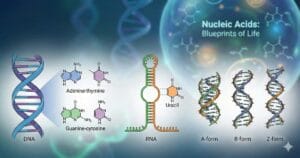
COMPETITIVE EXAM MCQs SERIES of ENVIRONMENTAL SCIENCE for UGC-NET/JRF, SLET, ARS, GATE, and other entrance tests – National Environmental Policy of India.
Syllabus Outline
- Objectives of India’s environmental policies.
- Key features of the National Environmental Policy (NEP) 2006 and its linkages with other policies.
- Legal and institutional framework and the roles of MoEFCC and Pollution Control Boards.
- NEP’s approaches to sectoral issues such as air, water, forests, and waste management.
- Public participation and challenges in policy implementation.
- Future directions for policy improvement and international commitments.
This quiz contains the concept-based most frequently asked 25 MCQs of “National Environmental Policy of India“. Each question has a single correct/most appropriate answer.
*****
1. Which of the following is not an objective of National Environmental Policy 2006?
a) Intra-generational Equity
b) Inter-generational Equity
c) Environmental Governance
d) Stabilization of population
2. What potential challenges may arise with implementing public participation in environmental decision-making?
I – Lack of public awareness and environmental literacy.
II – Domination of decision-making by powerful stakeholders like industries.
III – Difficulty in ensuring equitable representation of all sections of society.
IV – Difficult in prioritising environmental protection over economic gains.
a) I
b) I and II
c) I, II and III
d) I, II, III and IV
3. How long was the National Environment Policy, 2006 draft open for public consultation?
a) 3 months
b) 6 months
c) 1 year
d) No public consultation is involved
4. The National Environmental Policy is a response to our national commitment to a clean environment, mandated in Articles 48 A and 51 A (g) constitution, strengthened by judicial interpretation of Article __.
a) 21
b) 19
c) 29
d) 14
5. What action is recommended in the policy to enhance the enforcement of environmental laws?
a) Regular audits
b) Capacity-building programs
c) Public awareness campaigns
d) Legal reforms
6. Which actions were recommended by the National Environment Policy 2006?
I – Promoting organic farming
II – Strengthening legal arrangements for hazardous waste
III – Developing strategies for clean-up of toxic waste dumps
IV – Discouraging excessive use of plastic
a) I only
b) I and II
c) I, II and III
d) I, II, III and IV
7. What is the main focus of the policy regarding toxic and hazardous waste dumps?
a) No policy for toxic and hazardous waste management
b) Developing a national inventory
c) Dumping in a secure landfill or burying them underground
d) Developing ex-situ remediation for such pollutants
8. Which is NOT a principle of the National Environment Policy 2006?
a) Sustainable development
b) Precautionary principle
c) Polluter pays principle
d) Pollution stabilization principle
9. What are the primary criteria for a wetland to be designated as a Ramsar Site?
a) Its economic value
b) Its size
c) Its biodiversity
d) Its recreational potential
10. Principles explicitly mentioned in the NEP 2006 include:
I – Precautionary principle
II – Polluter Pays principle
III – Inter-generational equity
IV – Utilitarian principle
a) I only
b) I and II
c) I, II and III
d) I, II, III and IV
11. What is the primary goal of environmental governance reforms?
a) To centralize environmental management
b) To enhance public participation in decision-making
c) To reduce government spending on environmental issues
d) To increase reliance on international agencies
12. The NEP 2006 recommends what kind of database development to improve environmental governance.
a) Global environmental databases
b) National integrated environmental databases
c) Local fragmented databases
d) Proprietary commercial databases
13. The principal Objectives of the NEP 2006 include:
I – Enhancement of Resources for Environmental Conservation
II – Inter-generational Equity
III – Integration of Environment with Economic and Social
IV – Human equity in a work environment
a) I only
b) I and II
c) I, II and III
d) I, II, III and IV
14. In the NEP 2006, what is identified as a major challenge to sustainable development in India?
a) Lack of natural resources
b) Rapid population growth and urbanization
c) High levels of literacy
d) Overreliance on traditional agriculture
15. What is NEP 2006 stance on renewable energy?
a) It should replace all other forms of energy
b) It should be part of a diversified energy mix
c) It is considered as essential for economic growth
d) It is not addressed in the NEP policy
16. According to NEP 2006, environmental education should be integrated into which levels of education?
I – Primary education
II – Secondary education
III – Higher education
IV – Non-formal education
a) I only
b) I and II
c) I, II and III
d) IV only
17. NEP 2006 proposes which kind of resource usage to enhance environmental governance.
I – Human resources
II – Financial resources
III – Technological resources
IV – International aid
a) I only
b) I and II
c) I, II and III
d) I, II, III and IV
18. As per NEP 2006, the potential impacts on heritage sites must be taken into account while setting ambient air quality standards since it is considered as:
a) Incomparable values
b) Highest economic values
c) Highest environmental values
d) Highest cultural values
19. What is the primary purpose of the Ramsar Convention?
a) To protect endangered species
b) To conserve and wisely use wetlands
c) To regulate international trade in wildlife
d) To reduce greenhouse gas emissions
20. What are “Incomparable Values” in the context of wildlife?
a) Unique cultural significance of wildlife
b) Economic benefits from wildlife trade
c) Specific ecological and intrinsic values of wildlife
d) Landscape value of wildlife habitats
21. Why should the National Bio-safety Guidelines and Bio-safety Operations Manual be periodically reviewed?
a) To incorporate new technologies
b) To ensure alignment with international trade laws
c) To ensure they are based on current scientific knowledge
d) To reduce administrative costs
22. What protocol is mentioned as a guideline in NEP 2006 for dealing with Living Modified Organisms (LMOs) in transboundary movement?
a) Kyoto Protocol
b) Montreal Protocol
c) Bio-safety Protocol
d) Geneva Convention
23. According to NEP 2006, who is at the centre of concerns for sustainable development?
a) Wildlife
b) Human beings
c) Technological advancements
d) Environmental policies
24. Sustainable development aims to achieve a life in harmony with:
a) Environment
b) Economy
c) Nature
d) Urbanization
25. The principal Objectives of the NEP 2006 include:
I – Conservation of Critical Environmental Resources
II – Intra-generational Equity
III – Inter-generational Equity
IV – Efficiency in Environmental Resource Use
V – Industrial growth for the betterment of human life
a) I and III
b) I, II and III
c) I, II, III and IV
d) I, II, III, IV and V
*****
Previous: National Water Policy and its Implementation in India
Next: Environmental Conventions and Agreements
References
- Singh, G. (2019) Environmental Issues and Policies in India, Regal Publications.
- National Environmental Policy (NEP) 2006 – Ministry of Environment, Forest, and Climate Change (MoEFCC), Government of India.

